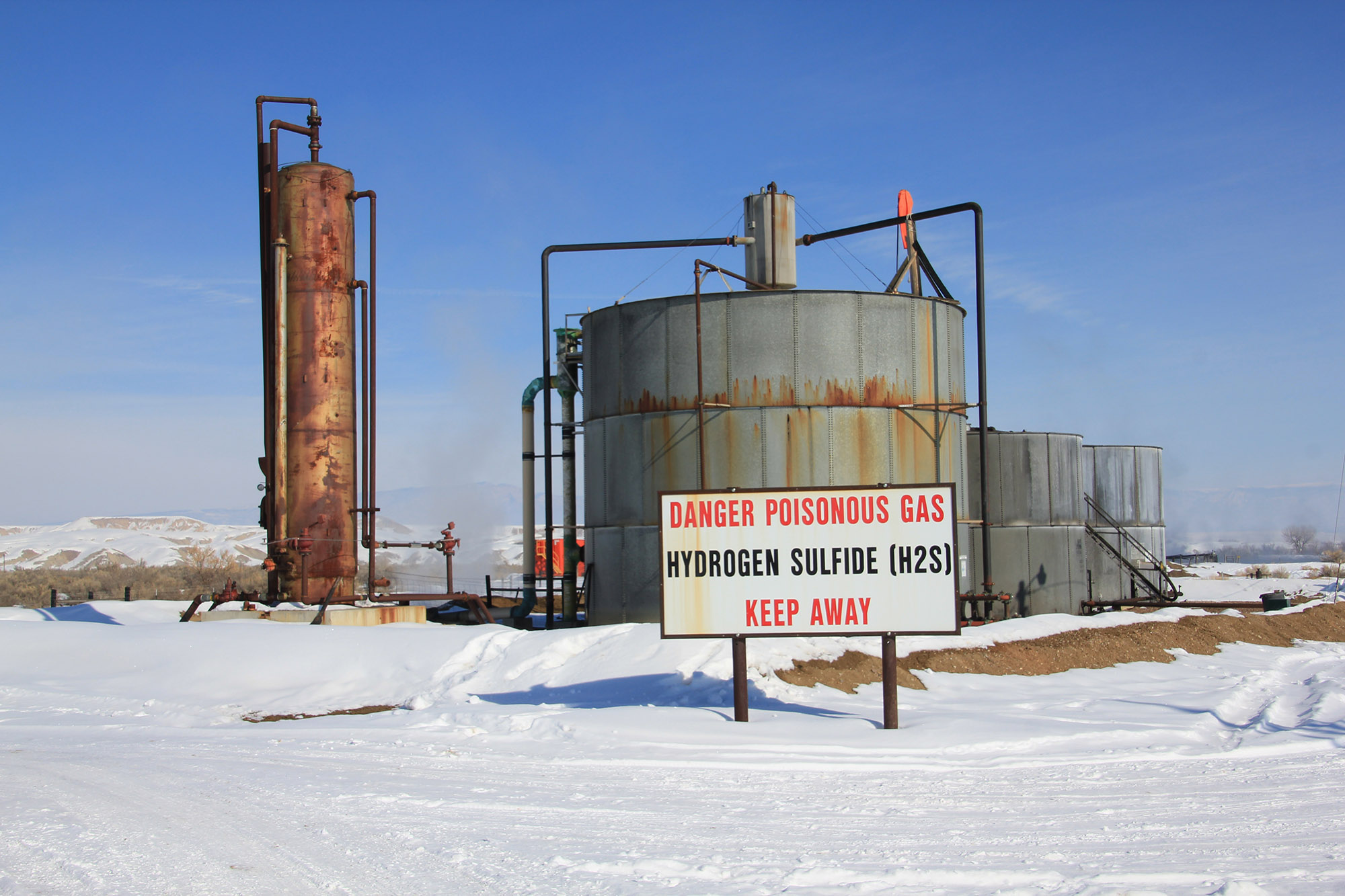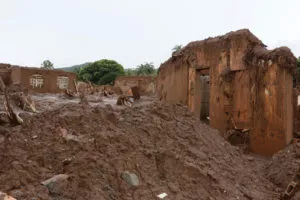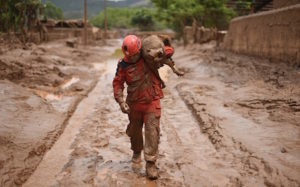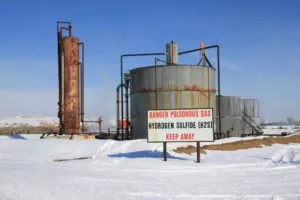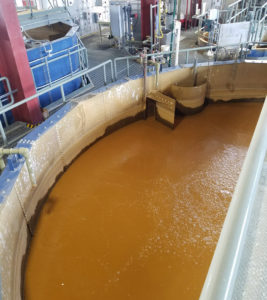Both liquid and solid wastes are stored at well sites in reserve or storage pits. Liquid wastes (as well as freshwater reserves for fracturing) may also be stored in giant impoundments that can hold millions of gallons. An investigation in Pennsylvania showed that there were twice as many impoundments in 2013 as in 2008.
Operators may also use impoundments to treat and re-use produced water from one site for hydraulic fracturing elsewhere. Wastewater has to be transported to and from impoundments—some of which can service dozens of wells in a large area—resulting in noise and pollution from truck traffic.
Pits and impoundments pose risks to water when they leak or overflow or when liners tear. They can also cause odors and air pollution when contaminants emanate off surfaces as contents settle and evaporate. Because of this, closed tanks are considered a safer option, although to avoid pollution risks they must be properly installed, maintained, and monitored.
Operators may leave solid wastes behind at well sites by burying storage pits. Buried pits in effect amount to thousands of small landfills that are never tested or overseen. Over time, the waste can contaminate groundwater and soil if the pits don’t have liners or liners leak or tear, problems that have led to efforts to better regulate waste pits, for example in New Mexico and North Dakota.
For More Information
- Earthworks case study: Waste impoundment in Pennsylvania
- Earthworks Rules to improve waste pit management in New Mexico

